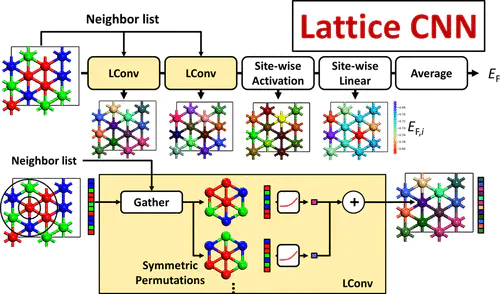Lattice Convolutional Neural Network Modeling of Adsorbate Coverage-Effects

Abstract
Coverage effects, known also as lateral interactions, are often important in surface processes, but their study via exhaustive density functional theory (DFT) is impractical because of the large configurational degrees of freedom. The cluster expansion (CE) is the most popular surrogate model accounting for coverage effects but suffers from slow convergence, its linear form, and its tendency to be biased toward the selection of smaller clusters. We develop a novel lattice convolutional neural network (LCNN) that improves upon some of CE’s limitations and exhibits better performance (test RMSE of 4.4 meV/site) compared to state-of-the-art methods, such as the CE assisted by a genetic algorithm and the convolution operation of the crystal graph convolutional neural network (test RMSE of 5.5 and 6.8 meV/site, respectively) by 20–30%. Furthermore, LCNN can outperform other methods with less training data, implying accuracy with less DFT calculations. We analyze the van der Waals interaction via visualization of the hidden representation of the adsorbate lattice system in terms of individual site formation energies.